Third in a series on the Outer Banks

Despite having its share of sprawl thanks to hotels, vacation homes, and their supporting businesses, the Outer Banks still feature areas with relatively unspoiled nature. From the sand dunes of Jockey’s Ridge State Park, to the birds of the Pea Island National Wildlife Refuge, to the dolphins frolicking offshore in the Atlantic Ocean, OBX is teeming with life.
Jockey’s Ridge

Jockey’s Ridge State Park protects the highest natural sand dunes on the Eastern Seaboard. Since they’re active dunes, heights may vary but a good ballpark figure is 90′ (27 m). Hang gliding is a popular activity here. That’s no surprise considering its location just south of Kill Devil Hills, where the Wright Brothers conducted their test flights. The Wrights were attracted by OBX’s favorable winds among other things. Indeed, one sometimes sees kites tied to fixed objects at vacation homes and left in the air; they can apparently fly for days at a time without any intervention due to how consistent the winds are!
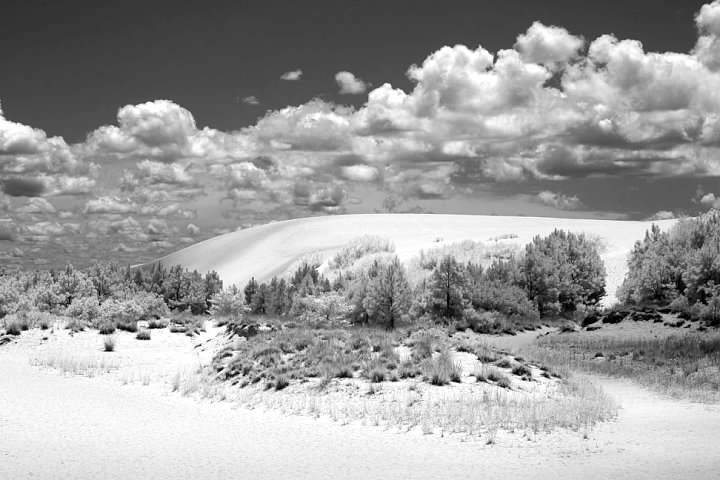
I found my infrared photos of Jockey’s Ridge more satisfying than the color ones, as the high contrast between shadowy areas (which reflect no infrared) and the sunlit portions of the dunes created a unity with the dark sky.
Bird Photography

Wildlife photography often takes more patience than I have, but I did manage to get a few decent shots during my visits to OBX in 2011 and 2012. I sometimes switched to my 75-300mm lens when I walked along the beach; photographing targets of opportunity may not be as effective as spending hours in a photo blind, but it sure was a better use of my vacation! Visitors to the Outer Banks in summer can hardly miss seeing groups of brown pelicans patrolling the beach for a meal. I’d hoped to get a shot of one diving into the water to catch a fish, but I didn’t get any decent shots of that. I did get a few photographs of the birds in flight by tracking them in my viewfinder and then squeezing off a shot when they were in the right position.
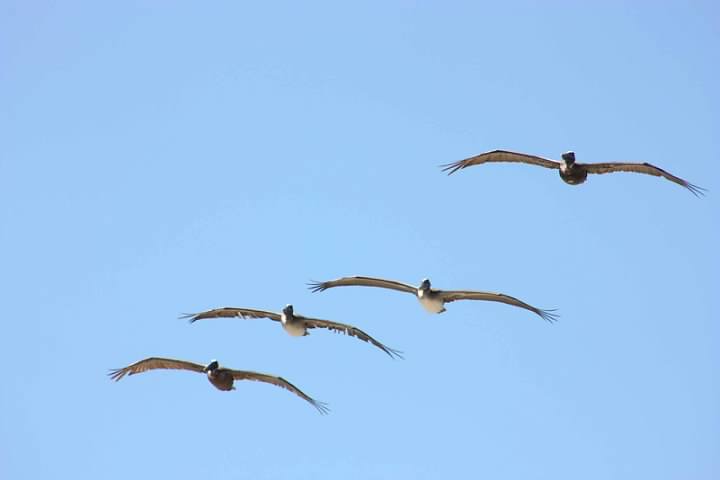
I enjoyed watching birds foraging in the surf during my walks. One of my favorite photographs from my 2011 trip is of a bird I’ve tentatively identified as a juvenile of a species called a willet, a type of large sandpiper.
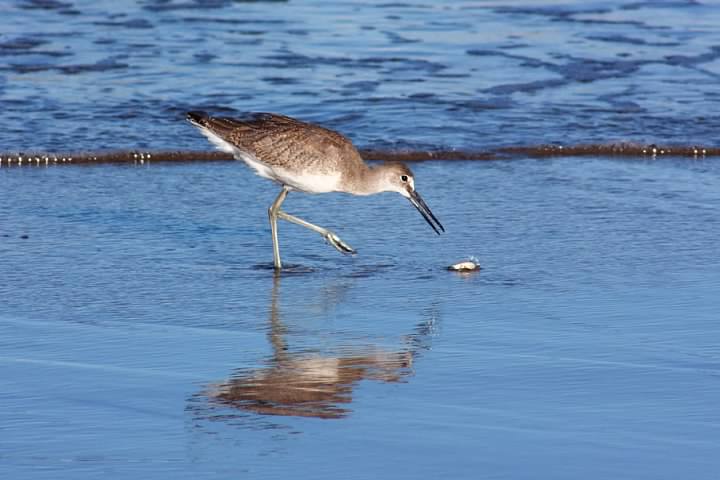
The young bird caught my eye as it dashed from the surf with a small morsel (a fish I think). Once on the beach, it set the prize down briefly, I guess to adjust its grip. I snapped the above photo before the bird picked up its meal and dashed away.
Crabs
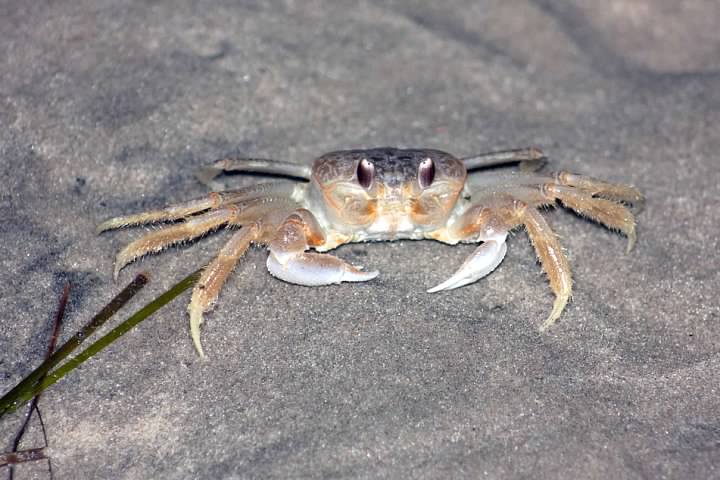
No discussion of OBX wildlife is compete without mentioning the variety of crabs that inhabit the area. Hidden in burrows during the day, an army of ghost crabs come out to forage at night. I probably should have just left them alone but I couldn’t resist taking the above shot with the help of the built-in flash from my DSLR. I don’t particularly like flash photography and only recently purchased a speedlight, but it was necessary to capture an image of this nocturnal crab. At least they don’t seem to be subject to the obnoxious red-eye effect.
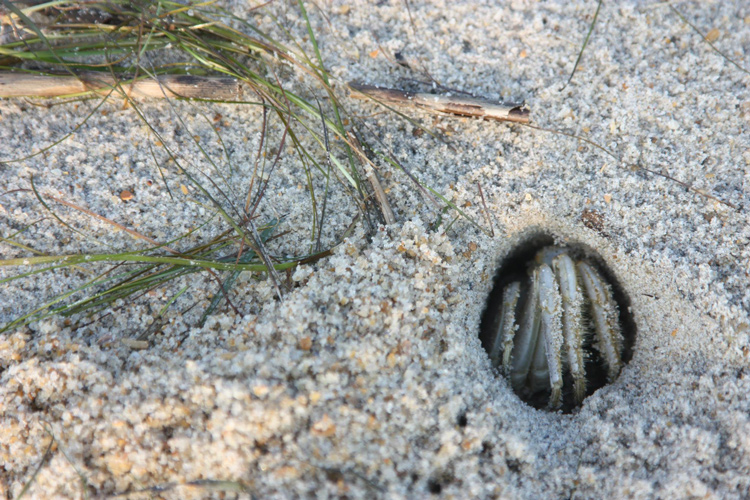
On a short visit to the Outer Banks in 2012 I took a ferry to Ocracoke Island. During my drive from the ferry dock to town, I stopped to hike the Hammock Hills Nature Trail, part of Cape Hatteras National Seashore. Although otherwise apparently devoid of wildlife during my visit, the trail was alive with fiddler crabs.

Fiddler crabs (of which there are many species) are known for their odd asymmetry: One claw is very large and the other is very small. I was surprised when I flushed groups of the crabs several times as I hiked along the trail. The fiddler crabs here inhabited the forest, not the beach. As I approached they began skittering away. If I got close, they watched me warily, always holding their larger claw in a position to shield their bodies.
I didn’t need a telephoto lens for crab photography, though the crabs’ effective camouflage makes the results generally less pleasing than bird photography.